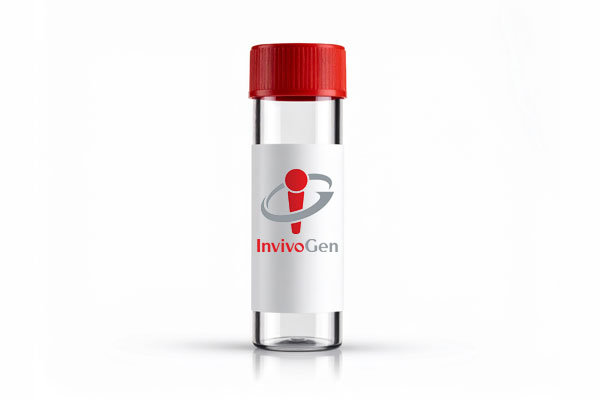
Anti-hTLR4-IgG
-
Cat.code:
mabg-htlr4-2
- Documents
ABOUT
Human TLR4 Neutralization Antibody - Monoclonal Mouse IgG1
Anti-hTLR4-IgG (clone W7C11) is a neutralizing monoclonal antibody specific for human Toll-like receptor 4 (hTLR4, CD284). It has been produced in hybridoma cells and purified by affinity chromatography. This antibody has been selected for its ability to efficiently neutralize the biological activity of hTLR4.
TLR4 primarily recognizes and is activated by lipopolysaccharide (LPS) and its toxic moiety Lipid A [1]. At the cell surface, activation of TLR4 initiates the MyD88-dependent pathway, leading to the activation of NF-κB and the production of a pro-inflammatory response [2].
Key features:
- Reacts with human TLR4
- Provided azide-free
- Each lot is functionally tested
References
1. Cochet, F. et al., 2017. The Role of Carbohydrates in the Lipopolysaccharide (LPS)/Toll-Like Receptor 4 (TLR4) Signalling. Int J Mol Sci 18
2. Kuzmich, N.N. et al., 2017. TLR4 Signaling Pathway Modulators as Potential Therapeutics in Inflammation and Sepsis. Vaccines (Basel) 5.
All products are for research use only, and not for human or veterinary use.
SPECIFICATIONS
Specifications
TLR4
Human
Neutralization assays
Sodium phosphate buffer, saccharose, glycine, stabilizing agents
Neutralization assays
Each lot is functionally tested and validated.
CONTENTS
Contents
-
Product:Anti-hTLR4-IgG
-
Cat code:mabg-htlr4-2
-
Quantity:2 x 100 µg
Shipping & Storage
- Shipping method: Room temperature
- -20°C
- Avoid repeated freeze-thaw cycles
Storage:
Caution:
Details
Toll-like receptors (TLRs) play a critical role in early innate immunity to invading pathogens by sensing microorganisms. These evolutionarily conserved receptors recognize highly conserved structural motifs only expressed by microbial pathogens, called pathogen-associated microbial patterns (PAMPs). Stimulation of TLRs by PAMPs initiates a signaling cascade leading to the secretion of proinflammatory cytokines following NF-κB activation. To date ten human and twelve murine TLRs have been characterized, TLR1 to TLR10 in humans, and TLR1 to TLR9, TLR11, TLR12, and TLR13 in mice, the homolog of TLR10 being a pseudogene.
TLR4, the first human TLR identified, is the receptor for Gram-negative lipopolysaccharide (LPS). The TLR4 gene was shown to be mutated in C3H/HeJ and C57BL/10ScCr mice, both of which are low responders to LPS [1]. However, TLR4 alone is not sufficient to confer LPS responsiveness. TLR4 requires MD-2, a secreted molecule, to functionally interact with LPS [2]. Furthermore, a third protein, called CD14, was shown to participate in LPS signaling, leading to NF-κB translocation. This signaling is mediated through several adaptor proteins: MyD88 TIRAP/Mal [3], TRIF/TICAM1, and TRAM/TICAM2 [4].
1. Poltorak A. et al., 1998. Defective LPS signaling in C3H/HeJ and C57BL/10ScCr mice: mutations in Tlr4 gene. Science, 282(5396):2085-8.
2. Shimazu R. et al., 1999. MD-2, a molecule that confers lipopolysaccharide responsiveness on Toll-like receptor 4. J Exp Med, 189(11):1777-82.
3. Horng T. GM. Barton, & R. Medzhitov, 2001. TIRAP: an adapter molecule in the Toll signaling pathway. Nat Immunol, 2(9):835-41.
4. Fitzgerald KA. et al., 2003. LPS-TLR4 Signaling to IRF-3/7 and NF-{kappa}B Involves the Toll Adapters TRAM and TRIF. J Exp Med. 198(7):1043-1055.
DOCUMENTS
Documents
Technical Data Sheet
Safety Data Sheet
Certificate of analysis
Need a CoA ?



